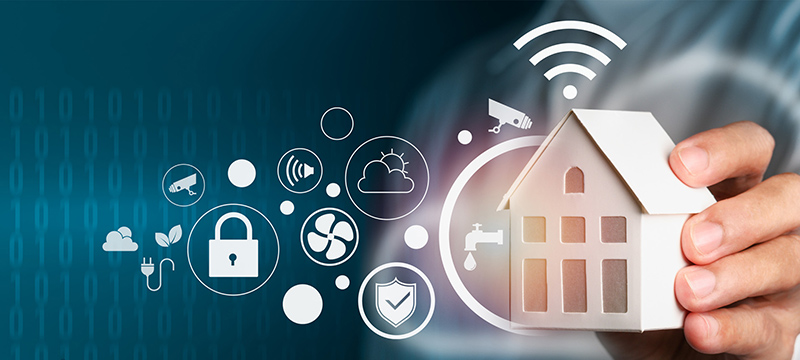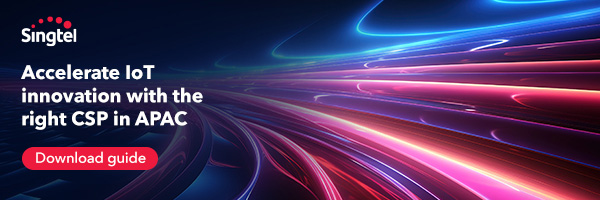
Imagine a home that anticipates your needs, responds to your preferences, and ensures your safety with minimal input. Thanks to the Internet of Things (IoT), this vision has become a reality in the form of smart homes. In this article, we’ll delve into the world of IoT in smart homes, exploring the key applications, benefits, challenges, and the bright future it holds for modern living.
The Rise of IoT in Smart Homes
Smart homes are residences equipped with IoT devices and systems that enhance comfort, security, energy efficiency, and convenience. IoT technology is at the core of this transformation, connecting various devices and sensors to create an interconnected ecosystem within the home.
Key Applications of IoT in Smart Homes
1. Home Automation
IoT devices in smart homes allow for automation of various tasks. For example, lights, thermostats, and appliances can be controlled remotely or set to operate on a schedule. Smart speakers like Amazon Echo and Google Home enable voice commands to control devices, making daily routines more efficient.
2. Security and Surveillance
IoT is revolutionizing home security by offering smart doorbells, cameras, motion sensors, and smart locks. These devices provide real-time monitoring, allowing homeowners to check on their property and receive alerts about potential security breaches.
3. Energy Efficiency
Smart thermostats, lighting systems, and appliances help homeowners reduce energy consumption. These devices can be programmed to operate more efficiently, and some can learn user preferences over time, further optimizing energy use.
4. Entertainment
IoT in smart homes offers integrated entertainment systems. Smart TVs, streaming devices, and audio systems can be controlled from a central hub or through smartphones and voice commands.
5. Health and Well-being
IoT devices in the healthcare sector are making their way into smart homes. Remote health monitoring, medication reminders, and telemedicine applications are improving the quality of life for patients and the elderly.
6. Home Maintenance
IoT sensors can monitor the condition of home systems such as HVAC, plumbing, and electrical. Alerts can be sent when maintenance is required, preventing costly breakdowns.
7. Home Appliances
IoT-enabled appliances can communicate with homeowners, notifying them of issues, providing information on usage, and even ordering replacement parts automatically.
8. Voice Assistants
Devices like Amazon Echo and Google Home have integrated voice assistants that control various IoT devices and answer queries, making the smart home experience more interactive.
Benefits of IoT in Smart Homes
The integration of IoT in smart homes offers numerous advantages:
1. Convenience
Smart homes are designed to make daily tasks more convenient. Devices can be controlled remotely, and automation simplifies routines.
2. Enhanced Security
IoT-based security systems provide homeowners with real-time monitoring and alerts, offering peace of mind.
3. Energy Efficiency
Smart homes are more environmentally friendly, as energy-efficient devices help reduce energy consumption and costs.
4. Personalization
IoT devices in smart homes learn user preferences and adapt to individual needs, creating a personalized living environment.
5. Safety
IoT technology enhances safety with features like smart locks and security cameras, allowing homeowners to monitor and secure their property.
6. Accessibility
Smart home features can be accessible to individuals with disabilities, improving their quality of life.
Challenges and Considerations
While IoT in smart homes offers numerous benefits, it also poses challenges and considerations:
1. Data Security and Privacy
Collecting and transmitting sensitive data in the home raises concerns about data security and privacy. Robust security measures must be in place to protect personal information.
2. Interoperability
IoT devices and systems must be compatible and standardized to ensure seamless data exchange and integration. Common protocols and standards are essential for achieving this.
3. Reliability
The performance and reliability of IoT devices can be a concern. Devices must work consistently to maintain the trust of homeowners.
4. Cost of Implementation
The initial cost of implementing IoT in smart homes can be a barrier for some homeowners. An assessment of the return on investment is necessary to justify the expense.
5. Workforce Training
The successful adoption of IoT in smart homes often requires workforce training and a cultural shift within households.
The Future of IoT in Smart Homes
As technology continues to advance, the future of IoT in smart homes looks promising. Here are some trends and developments to watch for:
1. Artificial Intelligence (AI)
IoT and AI will work together to provide more intelligent and adaptive automation, making homes even more responsive to residents’ needs.
2. Enhanced Security
Security systems will become more sophisticated, with machine learning and AI used to detect and respond to security threats.
3. Interconnectivity
Smart home ecosystems will become even more interconnected, with devices seamlessly communicating with each other for a more unified experience.
4. Sustainability
IoT will play a more significant role in sustainable living, with devices designed to minimize resource consumption and waste.
5. Integration with Smart Cities
Smart homes will be integrated with broader smart city initiatives, contributing to more sustainable urban living.
Conclusion
The Internet of Things is revolutionizing smart homes by offering enhanced convenience, security, energy efficiency, and personalization. Challenges related to data security, interoperability, and workforce training must be addressed to ensure that the benefits of IoT in smart homes are fully realized.
As IoT technology continues to evolve, it will remain a driving force in smart homes, offering a glimpse into a future where homes are more responsive, efficient, and aligned with the individual needs and preferences of their occupants, ultimately improving the quality of life for homeowners.







